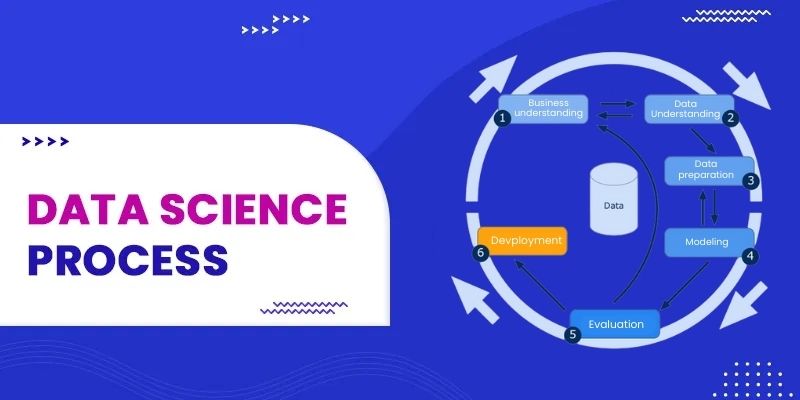If you belong to a technological field or are a student with a technical background, you have most likely heard of Data Science. This is one of the hottest industries in today’s tech sector, and this trend will continue as the future world becomes increasingly digital by the day. The data has the potential to create a new future. This blog will teach you about the Stages of the Data Science Process.
What is Data Science?
Data Science is the logic underlying the data or the process behind the modification. The Data Scientist is the specialist who ensures that the entire process moves smoothly, from developing the problem statement and collecting data to extracting their essential results. Are you looking to advance your career in data science? Get started today with the Data Science Course in Chennai from FITA Academy!
Data Science Process Life Cycle
There are various procedures that must be taken for any activity in the field of data science to provide successful results from the data at hand.
Data Collection
The fundamental step after drafting any problem statement is to gather data that will aid us in our analysis and modification. Sometimes data is obtained by conducting a survey, while other times it is collected through scraping.
Data Cleaning
The majority of real-world data is unstructured and must be cleaned and converted into structured data before it can be utilized for analysis or modeling.
Exploratory Data Analysis
This is the stage where we attempt to uncover hidden patterns in the data. In addition, we attempt to assess the various factors that influence the target variable and the extent to which they do so.
Model Building
Different types of machine learning algorithms and approaches have been developed that can easily find complicated patterns in data. This would be a very time-consuming process for a human to perform.
Model Deployment
After a model has been built and provided superior results on the holdout or real-world dataset, we deploy and monitor it. This is where we apply what we’ve learned from the data to real-world applications and use cases.
Components of Data Science Process
Data Science is a wide area, and to get the most out of the data at hand, many approaches and tools must be used to ensure the integrity of the data remains maintained throughout the process while keeping data privacy in mind. Learn all the Data Science techniques and Become a Data Scientist Expert. Enroll in our Data Science Online Course.
Steps for Data Science Processes
Step 1: Defining research goals and creating a project charter
Spend time learning about the goals and context of your research.Continue asking questions and creating examples until you understand the exact business expectations, how your project fits into the wider picture, how your research will improve the firm, and how they will use your data.
Step 2: Retrieving Data
Begin with data stored within the organization.
- Finding data within your own firm might be difficult at times.
- This data can be housed in formal data repositories managed by a team of IT specialists, such as databases, data marts, data warehouses, and data lakes.
- Accessing the data may take some time and may involve corporate policies.
Step 3: Cleansing, integrating, and transforming data
- Cleaning: Data cleansing is a subprocess of data science that focuses on eradicating inaccuracies in your data so that your data is a true and consistent picture of the processes from which it originated.
- Integrating: Bringing together data from several sources. Your data comes from a variety of sources, and this substep focuses on integrating these many sources.
- Transforming Data: Certain models require data to be in a specific shape.
Step 4: Exploratory Data Analysis
Exploratory data analysis entails delving deeply into the data. Because information is much easier to understand when shown in a picture. You primarily use graphical tools to obtain an understanding of your data and the connections between factors.
Step 5: Build the Models
The next step is to create models with the objective of making better predictions, classifying things, or acquiring a knowledge of the system, which is essential for modeling.
Step 6: Presenting findings and building applications on top of them
- Your soft skills will be most valuable at the end of the data science process, and they are crucial.
- Presenting your findings to stakeholders and industrializing your analysis method for repeatable reuse and integration with other technologies.
In conclusion, the Stages of the Data Science Process are problem definition, data collection, cleaning, exploration, modelling, and result communication. Each stage is vital for extracting insights and making informed decisions. Understanding this structured process is crucial for tackling data challenges and achieving meaningful outcomes. It empowers individuals and organizations to leverage data for creation and gain a competitive edge in today’s data-driven world.
Looking for a career as a Data Scientist? Enroll in this professional Advanced Training Institute in Chennai and learn from experts about Data Manipulation using Python and Data Science with R and R Programming Basics.
Read more: Data Scientist Salary For Freshers
